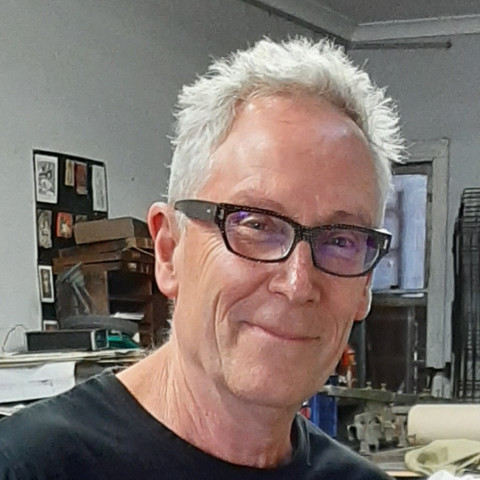
Born 1949, Zambia
Lives and works in Sydney
Represented by nanda\hobbs

David Fairbairn’s drawing process is one of dedication, involving a continuous construction and elimination of marks. Ostensibly, his long career has been concerned with portraiture, acting as a benevolent inquisitor in his pursuit of representing the essence beyond the literal representation of his subjects. He is intrigued by the physical space between his gaze and the sitter. What happens between two people in a room that allows things to be revealed, layered, and morphed into the picture plane?
Fairbairn points to the studio sitting as an intentional act of slowing down—allowing an almost meditative process to play out that pushes the relationship beyond the superficial. The extended time—multiple sessions spent with his subjects—allows Fairbairn to engage and transcend beyond the generally perceived idea of a portrait. For his portraiture to be successful, a level of trust is required from the outset. This extends far beyond a quick photo and its literal transcription. Conversation, both verbal and nonverbal, can be a fundamental element of portraiture drawn from life. It is the conversation between the artist and sitter, and the act of looking—really looking—that underpins the strength of his image-making.
The constant addition and subtraction of the drawn marks influences the work's structure and composition. This prolonged act—meticulously documented—gradually reveals the artist's subject. The artist notes the contemporary world is inundated with images; swiftly procured and visually dismissed even faster, destined to reside in hard drives or the cloud for eternity. Instead, he seeks to create an image that has a universality about it. We, the audience, are invited to engage with our own sensibilities and experiences; becoming, in effect, participants.
His process is born from his early career in London; a place where the rigours and influence of the great British modernists and critics was ever present. There is a meticulousness to the methodology of these artists. Consideration and intent in the act of creation was paramount. No shortcuts were tolerated.
The rigour of Fairbairn's approach reminds me of the work of Michelangelo Merisi da Caravaggio. It is not a stylistic comparison, but rather the singularity in which the artist’s search for truth moves beyond the literal. Subjects loom out of the dark. Theirs is a world within the pictorial space that exists physically and metaphorically. The secrets of the subject and their nuances are only revealed to us if we are patient. This act is a gift we should not squander in our haste to experience the next thing.
Today, we communicate predominantly through the written word online. Indeed, language itself has been transformed, abbreviated and reinvented to emphasise emotion: innuendo, humour, love, lust ricochet around our virtual world. What is most interesting, perhaps, is the time that exists between words—what goes unsaid in a text, what exists between the lines that elicits the human chemistry we crave. This is the tension that David Fairbairn creates in his portraits. Our need to peel back the layers to understand what lies beneath is intoxicating.
Ralph Hobbs
October, 2024
Your monthly art news on the run plus invitations to Nanda\Hobbs exhibitions and events